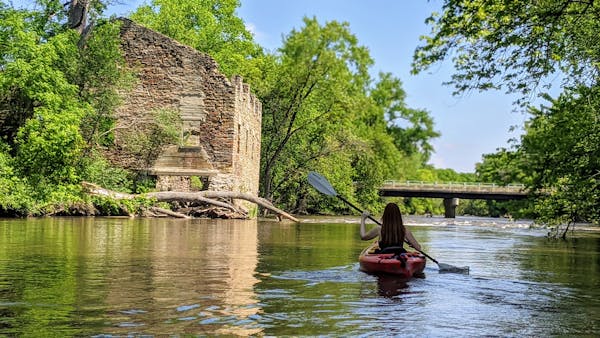Wakesurfing boats are causing controversy on Lake Minnetonka, and some residents are pressing for new restrictions for the specialized watercraft.
As the sport has grown in popularity, so have complaints from lake users and homeowners about noise and disruptive waves caused by the large, slow-moving boats, which are designed to create a wake large enough to surf.
Area residents packed a special hearing of the Lake Minnetonka Conservation District on Wednesday as the body considers tighter restrictions on wakesurfing.
John Bendt, who heads Citizens for Sharing Lake Minnetonka, said wakesurfers are monopolizing the smaller bays and driving out sailors, paddlers and anglers.
"Wakesurfing affects other users of Lake Minnetonka in a way that's never been seen on bays of 250 acres or less," Bendt told public officials from 14 communities that abut the lake.
Bendt's group of nearly 600 members advocates banning wakesurfing within 700 feet of docks or shorelines — the current limit is 150 feet — as well as banning wakesurfing on smaller bays before noon.
Wakesurfing enthusiasts and representatives of the boating industry said it would be unfair to single out a particular kind of boat for restrictions, especially given that water recreation is so deeply rooted in Minnesota culture.
"In Minnesota, boating isn't just an activity — it's a lifestyle," said Chad Tokowicz of the Marine Retailers Association of the Americas.
Anti-wakesurfing activists "are loud, but they don't represent reasonable boaters," said Michelle Mueller, chief executive of an Excelsior boat dealership.
Wakesurfing is just what it sounds like. Using a small board, wakesurfers ride the wake of special boats designed to create a large wave. The boats travel slowly and often have ballast tanks that can be filled with water to make them heavier, as well as wings that can be deployed to enlarge and shape the waves they produce.
Lake Minnetonka has a thriving wakesurfing community and produced many champions in national and international competitions. At least five or six world champions live on the lake, according to Chris Bank, himself a world champion and lake resident.
"Lake Minnetonka is a wonderful lake," he said in an interview before the meeting. "It's a beautiful lake seemingly made of up many small lakes. There's something magical about that."
Minnesota's lakes are a public resource that should be open to all, Bank said.
"Our window is short, but Minnesota has done a great job of opening our lakes to anyone who wants to use them, for whatever they want to use them for," he said.
Bendt and others said the large waves from wakesurfing boats have the potential to damage the shoreline, as well as stirring up debris from the lake bottom that can promote algae blooms.
In a study released this year by the University of Minnesota's College of Science and Engineering, researchers found that the waves from wakesurfing boats take at least 400 to 500 feet to dissipate to levels comparable to non-wakesurfing boats.
Wakesurfing advocates countered with a study commissioned by the Water Sports Industry Association that concluded wakesurfing waves are less destructive under most conditions than wind-driven waves.
That brought a sarcastic jab from Gabriel Jabbour, a marina owner and former Orono mayor.
"We heard the same thing from the tobacco industry," said Jabbour, who called for a 300-foot limit on wakesurfing. In an interview after the meeting, Jabbour said he has long advocated for a 300-foot limit for all boats.
Both sides agreed that education efforts by wakesurfing enthusiasts have been effective, especially in persuading boaters to turn down the loud music that many play as they surf.
And education should continue to be the emphasis, advocates said.
"Let's take everybody's opinion, throw it in the pot and try to come up with this educational respect program," Bank said. "Encourage people to wakesurf safely. And how [to] get along with everybody on the lake."
The conservation district is unlikely to move quickly on recommending or adopting any additional restrictions on wakesurfing, said Gregg Thomas, the group's chair.
"We have 14 different board members ... and we may have 14 different opinions," he said.
Carolyn Parnell, 'trailblazer' who served as Minnesota's first IT commissioner, dies


